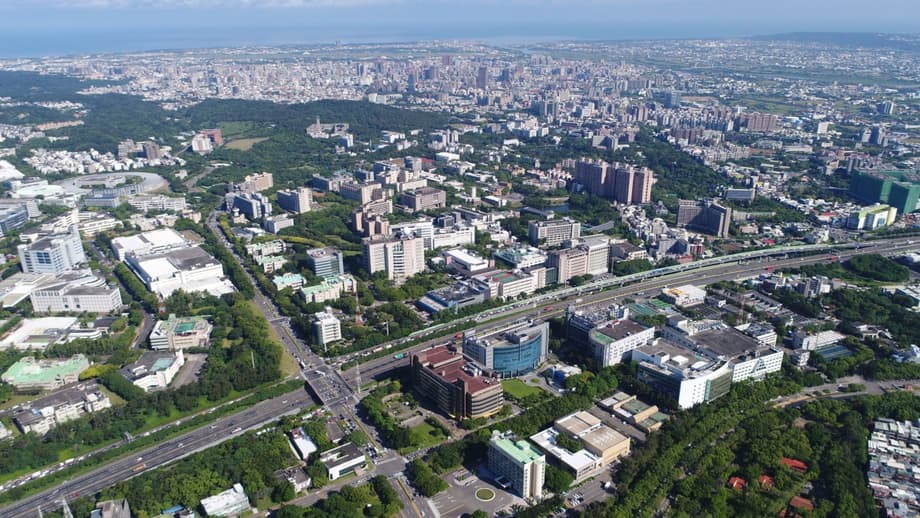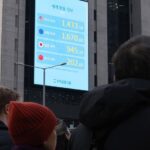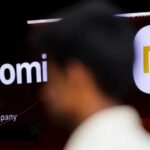A photo and a message with global stakes
China’s embassy in Washington used a familiar phrase on X, paired with a striking image. The post asserted Beijing’s one China position and included an aerial photograph of Hsinchu Science Park in northern Taiwan, a compact district that anchors the most advanced chipmaking on earth. The picture choice was read across the tech and policy worlds as a pointed reminder of where the world’s most sophisticated semiconductors are made, and how that concentration intersects with rising tension in the Taiwan Strait.
- A photo and a message with global stakes
- What Hsinchu Science Park represents
- How a single region powers modern technology
- Signals, drills, and the risk to sea lanes
- Cable cuts and digital choke points
- Energy and water constraints at Taiwan’s chip hub
- Global hedging and industrial policy
- Beijing’s tech push and self reliance campaign
- What Taiwan says and does
- Scenarios that keep planners up at night
- The Bottom Line
Analysts quickly noted that the park contains several key Taiwan Semiconductor Manufacturing Company facilities, including legacy fabs and the Global R&D Center that underpins future process technology. The work done there supports chips designed by Nvidia, AMD, Apple, Qualcomm, and Intel, among many others. Even though the embassy did not mention semiconductors, its carousel spoke volumes.
In that post, the embassy put the focus squarely on sovereignty messaging. The phrasing was direct and familiar to diplomats and companies alike.
After the embassy’s post, an official line from Beijing was front and center:
There is but one China in the world.
The phrase is part of a decades long political dispute. Taiwan is a self ruled democracy that Beijing claims as its territory. The island’s status is intertwined with global technology supply chains, which amplifies the stakes of every signal and counter signal across the strait.
What Hsinchu Science Park represents
About an hour south of Taipei sits Hsinchu Science Park, a 1,400 hectare campus that has evolved into a dense ecosystem for semiconductor manufacturing and research. Hundreds of tech firms cluster there, including TSMC, United Microelectronics Corporation, and MediaTek. The park is next to top universities and the Industrial Technology Research Institute, creating a continuous pipeline of talent and industry partnership. This proximity is by design. Taiwan’s government seeded the park in 1980 and layered incentives to build a complete, self sustaining manufacturing base.
How it became the chip capital
Early on, the park supported personal computer manufacturing. By the 1990s, it had pivoted hard to semiconductors. The result is a rare concentration of facilities that design, produce, and service advanced chips at scale. TSMC, founded by Morris Chang, became the anchor, and Hsinchu became its nerve center for leading edge process development.
Morris Chang, the founder of TSMC, captured the role of Taiwan’s science parks in a public reflection on the model that helped create this ecosystem.
If not for the science parks that offer all the infrastructure and land, a lot of tech companies may not be possible today.
The cluster effect
A defining strength of Hsinchu is the density of suppliers and service providers located minutes away from fabs. That shortens response time, reduces downtime, and increases yields. In chip manufacturing, where a few minutes of halt can cost millions, time is money.
Lucy Chen, a longtime semiconductor executive and now a senior figure at a Taipei based research firm, explained the operational logic behind the cluster.
Every second is money in manufacturing. If you lost the time you lost the money.
How a single region powers modern technology
The smallest chips made in and around Hsinchu are not small in their impact. This is where the world fabricates most five nanometer and below processors and where vendors validate the flows that turn dense chip designs into physical wafers for artificial intelligence servers, smartphones, high end PCs, and cars. Taiwan’s companies account for a large share of global foundry output, and TSMC alone produces at least 90 percent of the most advanced chips used for AI accelerators and cutting edge consumer devices.
That dominance is why governments and boardrooms track Taiwan’s chip sector with unusual attention. The scale of concentration has prompted U.S. financial leaders and national security planners to warn about single points of failure that could trigger massive economic damage if disrupted.
In recent remarks, the U.S. Treasury Secretary underscored that fear with blunt language.
Taiwan’s chip sector is the single greatest point of failure for the world economy.
The risk is not abstract. A disruption to advanced node production or advanced packaging in Taiwan would ripple through cloud computing, AI model training, automotive manufacturing, and consumer electronics. The Hsinchu photo, seen in this light, amounts to a reminder that the beating heart of modern computation lies in one constrained geography.
Signals, drills, and the risk to sea lanes
Chinese military activity around Taiwan has increased in recent months, including large exercises that simulate blockades and inspections of commercial ships. Any attempted quarantine of Taiwan’s ports would quickly affect key shipping lanes used to move raw materials into the island and finished chips out to the world. U.S. officials have started modeling worst case scenarios for disruptions to those routes and how quickly alternative capacity or stockpiles could soften the shock.
The strait tension is visible at the front line. Outlying islands administered by Taiwan, some only a few kilometers from the Chinese coast, report regular interactions with China’s coast guard and navy. Authorities in Kinmen and nearby islets have stepped up monitoring even as they try to keep daily life normal and tourism open. The geography underscores how narrow the margin is between routine patrols and an incident that can escalate.
For chip logistics, even short delays in maritime traffic can lead to backlogs. Wafer shipments, photolithography chemicals, high purity gases, and spare parts flow through the same lanes as many other goods. Insurance premiums would spike, crews could reroute around risk zones, and lead times would stretch. That is why planners treat simulated inspections as stress tests for the wider supply chain.
Cable cuts and digital choke points
The physical lanes are only part of the story. Earlier this year, an undersea cable linking Taiwan to transpacific networks was damaged, disrupting connectivity and highlighting how vulnerable communications systems can be. Taiwan has responded with higher penalties for damaging subsea cables. The stakes go beyond internet access for consumers. Chip design files, EDA tool chains, and factory telemetry depend on secure and reliable links to partners in the United States, Europe, and Asia. A targeted attack on cables, or even an accident during a crisis, could slow design cycles and remote support for fabs.
Digital choke points and maritime choke points reinforce each other. A ship rerouted around a tense zone might lose connectivity for longer stretches if cables are damaged or monitored. Companies that run round the clock production rely on both the port schedule and the fiber map, and both became part of risk calculations after the cable incident.
Beyond cables, Taiwan’s chip sector also depends on stable electricity and water. Blackouts or droughts can halt production lines that must run continuously to maintain quality and yields. Those environmental and infrastructure pressures shape contingency planning as much as geopolitics.
Energy and water constraints at Taiwan’s chip hub
Taiwan’s success in advanced manufacturing brings an energy dilemma. The island imports roughly 90 percent of its fossil fuels by sea. Its power grid has faced several large outages in recent years. Growing demand from AI data centers and new fabs is straining capacity, and TSMC alone uses a significant share of the island’s electricity. The margin between available supply and peak demand has at times grown thin, which is a risk for an industry that cannot tolerate sudden shutdowns.
Angelica Oung, a journalist who covers Taiwan’s energy system and founded a nonprofit focused on the clean energy transition, has tracked the fragility in the grid and the industry consequences.
It shows that the system is fragile.
Energy policy experts in Taipei warn that semiconductor expansion requires a clear plan for clean, reliable power. That includes adequate gas reserves, acceleration of offshore wind, faster progress on solar where feasible, and a hard look at nuclear policy. Without more stable zero carbon power, AI ambitions and chip capacity could hit constraints.
Nicholas Chen, a lawyer who analyzes Taiwan’s climate and energy policies, summed up the supply requirement for the next wave of computing infrastructure.
In order to plan and operate AI data centers, an adequate supply of stable, zero-carbon energy is a precondition.
Water is another pressure point. Severe drought in 2021 forced tight water management across science parks, including Hsinchu. Fabs consume ultra pure water at scale, then recycle it through costly systems. New facilities have invested in higher recycling rates, but long dry spells still pose challenges that require coordination with local authorities and contingency storage. These environmental constraints add another layer of complexity to an already tight operation.
Global hedging and industrial policy
Governments have responded to concentration risk with large subsidies and new laws. In the United States, the CHIPS and Science Act set aside roughly 52.7 billion dollars for new manufacturing, research, and workforce programs. Japan has re-emerged as a major backer of domestic fabs and materials. The European Union passed its own chips initiative, and South Korea, Singapore, Malaysia, and India are rolling out policies to secure more of the value chain. These moves aim to build redundancy in critical nodes like advanced lithography, memory, and packaging.
Some of that investment has already materialized. TSMC is building new fabs in Arizona and in Japan. Partners are expanding advanced back end packaging capacity in the United States and Europe. Yet the most advanced logic processes remain concentrated in Taiwan. Skilled teams, supplier networks, and tacit knowledge built over decades still give Hsinchu and its sister parks an edge that new sites will take time to match. Efforts to diversify are real, but the world will rely on Taiwan for leading edge chips for years.
Can the world diversify fast enough
Capacity installations outside Taiwan are increasing, but they face bottlenecks in tool availability, specialized construction crews, and experienced fab engineers. Export controls, licensing, and geopolitics add friction. The likely outcome in the medium term is a more distributed supply chain for mature nodes and packaging, with the cutting edge still centered in Taiwan. That mix reduces some risk, but it does not eliminate the central importance of Hsinchu and TSMC to AI, data center, and premium mobile roadmaps.
Beijing’s tech push and self reliance campaign
China has poured state funding into its own chip sector and is pushing to reduce dependence on U.S. technology. Recent guidance reportedly bars some of China’s largest tech companies from buying new Nvidia AI chips tailored for the Chinese market. Officials have promoted domestic alternatives from firms such as Huawei and Cambricon, and cloud platforms are working to build software stacks that rely less on foreign vendors. The goal is to raise performance and scale within a controlled ecosystem.
That industrial push sits alongside political messaging like the Hsinchu photo. Beijing’s strategy blends diplomatic pressure, military signaling, and economic measures aimed at reshaping technology dependencies. A more self sufficient Chinese compute stack would reduce one kind of vulnerability while sharpening competition in AI hardware and software.
For multinational companies, this environment complicates planning. Compliance with export controls, potential countersanctions, and shifting procurement rules can upend product roadmaps. The risk calculus for locating R&D, procurement, and data center capacity is changing as the technology spheres separate.
What Taiwan says and does
Taiwan’s leaders have rejected Beijing’s one country, two systems framework and continue to stress the island’s democratic system and distinct way of life. The government has tightened defense cooperation with partners and increased its presence in regional forums wherever possible. At the Asia Pacific Economic Cooperation meetings, Taiwan’s representative has discussed supply chain security and semiconductor collaboration with senior U.S. officials, signaling how central the chip sector is to economic and diplomatic ties.
At the same time, Taiwan is encouraging investment in new science parks in central and southern regions and working to spread risk across multiple sites. TSMC and other firms are expanding overseas, but much of the most advanced production and packaging still happens at home. That concentration is often described as Taiwan’s silicon shield, an idea that the value of the chip industry deters conflict because any large disruption would harm all sides. Whether shield or target, the sector’s resilience depends on practical steps to harden facilities, secure logistics, and assure energy supply.
Scenarios that keep planners up at night
In boardrooms and ministries, scenario planning has grown more detailed. Planners test responses to a range of shocks, from a brief naval exercise that reroutes ships to a longer blockade that interrupts imports of gas and critical chemicals. They also look at sabotage or accident risks to undersea cables, cyber attacks on factory control systems, and grid instability during heat waves. Each scenario has different timelines and mitigation strategies, yet all acknowledge the heavy dependence on a small geographic area for the world’s most valuable compute engines.
What companies can do now
- Map suppliers down to sub tier vendors for tools, gases, resists, and specialty materials, then stress test assumptions about lead times and alternates.
- Build higher inventories of critical wafers and parts tied to AI accelerators, premium mobile processors, and data center switches.
- Secure multi site packaging and test options, and qualify second sources for mature nodes where possible.
- Expand design for manufacturability guardrails to anticipate process migration if a node shift becomes necessary.
- Coordinate with logistics partners on rerouting plans and insurance coverage for Taiwan related shipments.
- Work with cloud and EDA providers on offline or low bandwidth workflows in case of cable disruptions.
- Advocate for stronger grid reliability, onsite power options, and water recycling at supplier facilities.
The Bottom Line
- China’s embassy paired a one China message on X with a photo of Hsinchu Science Park, highlighting Taiwan’s central role in advanced chips.
- Hsinchu hosts TSMC fabs, research centers, and key suppliers, forming an ecosystem that powers AI, smartphones, and modern computing.
- U.S. officials warn that Taiwan’s chip sector is a single point of failure for the world economy given its concentration at leading edge nodes.
- Chinese military drills, simulated blockades, and a recent undersea cable incident underscore risks to shipping lanes and connectivity.
- Taiwan faces energy and water constraints, with experts calling for more stable zero carbon power to support expanding chip capacity.
- Global policies like the CHIPS Act aim to diversify production, but the cutting edge remains concentrated in Taiwan for now.
- Beijing is pushing self reliance in AI chips, limiting Nvidia purchases and backing domestic alternatives from Huawei and others.
- Taiwan rejects one country, two systems and strengthens ties with partners, while firms plan for scenarios from shipping disruptions to grid stress.




